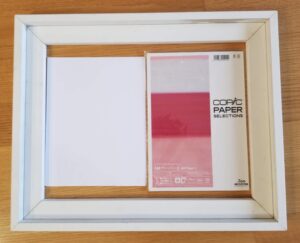Ashley Lekach

Letter Paper Besides A4. Image: A. Lekach.
The year is 2018 and you (the person who is reading this blog post) are in dire need of paper to print off your essay that’s due within the hour. You may ask, what type of paper do I need? As an uninformed Canadian civilian, you are not sure; you simply rush to the market and grab the nearest pack of paper you can find. Unfortunately, you have grabbed a pack of A4 (8.3” x 11.7”) paper rather than the Letter paper size (8.5” x 11”) that is standard in North America. You fail your essay for not following the guidelines. Besides that, you also purchased paper that was not environmentally conscious; therefore, you feel even guiltier for your choices of the morning. Life is sad. You could, however, have avoided this tragedy if you had prior knowledge of the modern paper industry…
The difference between Metric and Imperial system with regards to the paper industry
Most European and Asian countries, as well as Australia, use the Metric system for their paper sizes, as “the A4 has become the standard business letter size in English speaking countries such as Australia, New Zealand and the UK” (Dimensions). Canada represents a unique situation, officially using the Metric system for its measurements while still using Imperial system for its paper sizes. This is because Canada gets most of its paper from America: one of two nations (along with Mexico) that still clings to the Imperial system.
How Paper is Made in the Modern Industry
Regardless of desired paper size, the first step in paper-making involves the breaking down of trees into their raw material structure. There are, as well, a variety of other natural materials that can be used to make paper—materials such as hemp—that follow a similar manufacturing procedure as that of wood paper. For the purposes of this paper, we will stick to paper made from trees.
The raw wood “is made up of fibers called cellulose” which are “stuck together with a natural glue called lignin” (How Do You Make Paper From a Tree?). The raw wood needs to be broken down into a more pliable state through the separation of the lignins and cellulose fibers before it can be made into paper. This is accomplished through a process called “pulping.” Mechanical pulping uses machines to separate the fibers using a mixture of water and chemicals. Various additional chemicals can be added to make stronger paper or used to attain the desired coloration of the paper. The procedure of chemical pulping is called “kraft.” For example, the whiteness of the paper would be dependent on the amount of bleach added to the pulp.
After the desired watery pulp mixture is obtained, it is then “spray[ed]…onto moving mesh screens” to remove the water from the cellulose fibers. The mat is then “run through heated rollers to squeeze any remaining water and compress it into one continuous roll of paper” (How Do You Make Paper From a Tree?). The paper can then be cut down into its desired lengths to be used accordingly.
Please Pulp Responsibly
Paper is a product many people take for granted today. However, our rapid consumption of paper on a global scale should not be taken lightly as paper is by no means an infinite resource. Paper manufacturing is “one of the largest industrial sectors in the world” accounting for “40 percent of all industrial wood [products]” and therefore having an “enormous influence on global forests” (“Pulp and Paper”). Unstable pulp practices can lead to deforestation which contributes to problems such as climate change and poor water quality. Canada, having one of the largest forestry industries, manages to have “166 million hectares of forest certified as being sustainably managed under one or more of the three globally recognized certification systems” (“Key facts about Canada’s forest”) showing that environmentally friendly forestry consumption is possible. As a consumer, it is thus important for you (the person who has reached the end of this blog post) to buy paper from companies that promote responsible paper production and consumption. You can do this by being a responsible consumer, by following WWF Paper Database guidelines, and forestall from wasteful paper usage.
Paper is a wonderful invention that helped spread knowledge throughout the world. We freely use paper in our daily lives, yet we should engage ourselves in the technical aspects on how it is made as well. By familiarizes ourselves with how paper is actually made we can also appreciate all the work that has gone into making a single page of paper.
Works Cited
“Check Your Paper Database,” WWF. https://wwf.panda.org/our_work/forests/forest_sector_transformation2/checkyourpaperdatabase2.cfm. Accessed 16 Nov. 2018.
“Dimensions of A Paper Series Sizes,” Paper Sizes: International Paper Sizes and Formats. https://www.papersizes.org/a-paper-sizes.htm. Accessed 11 Nov. 2018.
“How Do You Make Paper From a Tree?” Wonderopolis. https://wonderopolis.org/wonder/how-do-you-make-paper-from-a-tree. Accessed 16 Nov. 2018.
“Key facts about Canada’s Forests,” Natural Resources Canada. 2 July 2015, https://www.nrcan.gc.ca/forests/measuring-reporting/key-forest-facts/17643. Accecced 15 Nov. 2018.
“Pulp and Paper,” World Wildlife Fund, https://www.worldwildlife.org/industries/pulp-and-paper. Accessed 16 Nov. 2018.